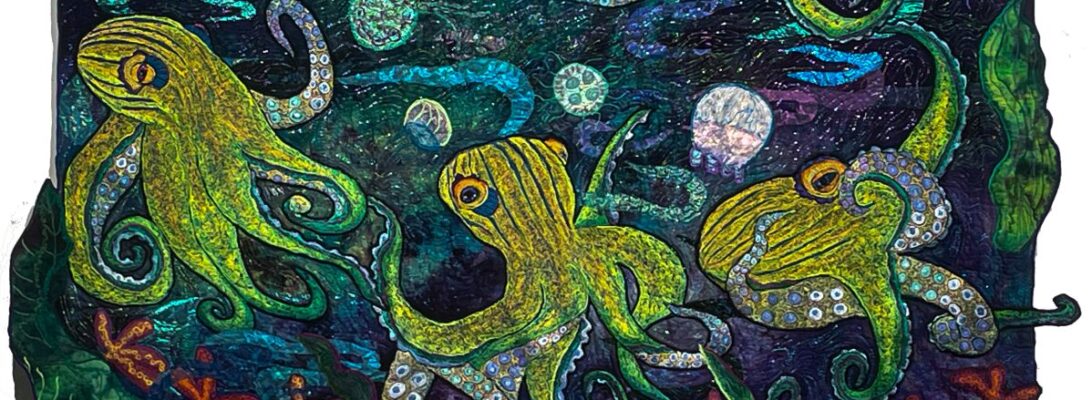This is about keeping old work. It’s also about process shots. And it’s about putting things down and picking them back up when the time is right.
There are pieces that never work out. I don’t have a bunch of hopeless little piles in the studio, but there are some. This is one that is old enough that I don’t even have process shots of the disaster.It could vote. If I had process shots, Id know better what I did.
There are 200 fountains in Kansas City in around a four block area. I got to walk there one afternoon. I’m always a water baby. I was mesmerized. I saw a fountain with a cat head that blew my mind. Not the largest fountain. But all I could think of was birds flying through it. Owls. Spoonbills. Swallows. Chickens. Fantasy birds flying over an old stone fountain.
I had to try it.
It bombed. I couldn’t make the fountain. I’m not good at man made structures. I just didn’t have the chops. And I had no Idea how to make flowing water. It took me almost nine months to figure out that I couldn’t figure it out.
That kind of exercize is bad for moral. I never throw things out, but I must have thrown this out. I can’t even find the cat head I embroidered for it. Had I kept process shots and left the pieces alone, I could show you. As it is, you’ll have to imagine. It was hopelessly rumpled and the fountain looked like it was made by 2 3 year olds ready for naptime.

Fast forward 15 years. I rubbed a series of grey texturized fabric for some abandoned city pieces. I wanted birds flying over it. Sounds familiar, doesn’t it? J’d come back to my cat head fountain.
There is an instinct to run. To say it’s too hard. To just back away.
But I’ve decided not to.

What has changed?
- I do my embroideries separately now so I get much less distortion
- I can do the fountain as a separate applique and applique it as well
- I’m much more secure with falling water. I’ve done it now and feel confident I can do it again.
- I now use oil paint stick rubbing to create old carved stones.
- I’m working with a better stabilizer (Decor Bond, Stitch and Tear, and Felt)
Strangely enough, I was able to find a picture of the fountain online. Not available five years ago. Somethings just get better.

Will that matter?
It might, It’s worth a try. When an old idea still has that kind of heat behind it, it’s important. It needs to be worked with. We begin to transform ourselves when we interact with images that somehow connect strongly. Most strongly, when those images scare or upset us, but also the ones that delight us. Creating an image gives us some power over what we create. It changes our story. It changes us. All those cave men drawing Bisons can’t be that wrong.



Currently I’m working on embroidering the three swallows, visiting the fountain. While the fountain is a mundane ordinary thing, the birds are anything but. I did them in rainbow colors, because they are the fantasy past all that mundane cold stone. They are delight on a gray cold day.
I originally wanted one with owls and one with roseated spoonbills. I still might.
I’m going to continue this in several posts, because it’s clearly a journey for me, and I’d like to share it with you. Let me know what you think.











































































